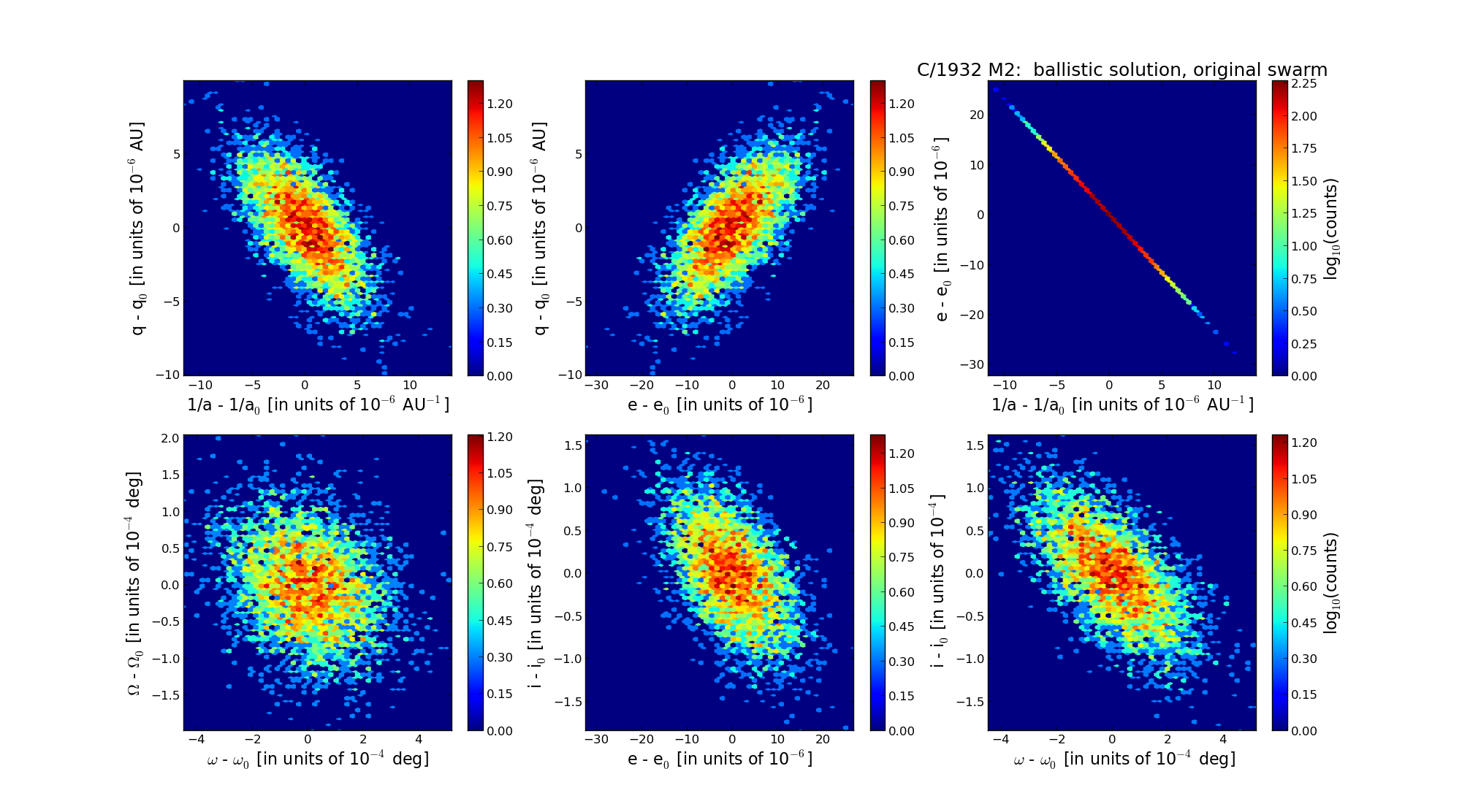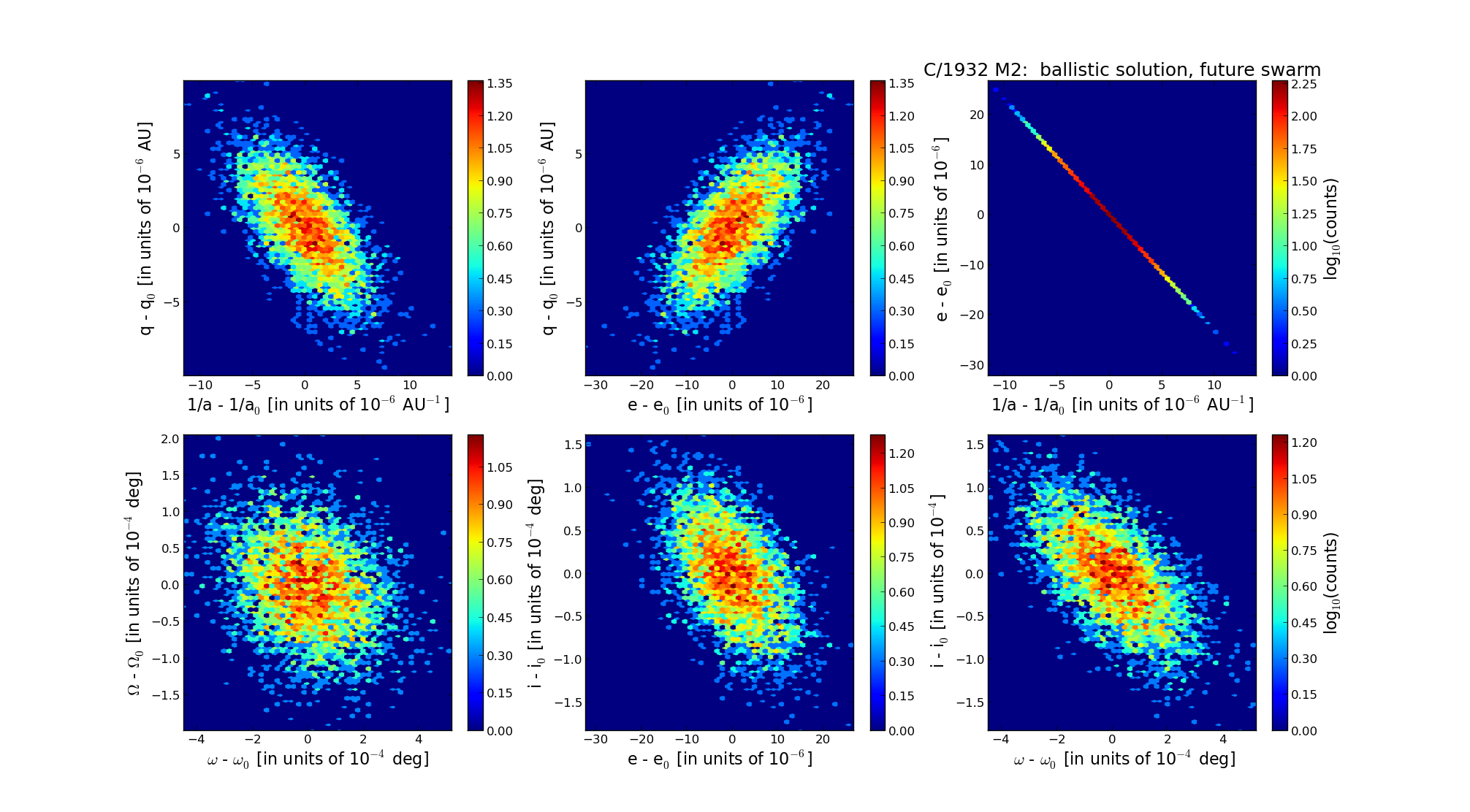| Solar System Dynamics & Planetology Group |
 |
C/1932 M2 Geddes |  |
| Solar System Dynamics & Planetology Group |
 |
C/1932 M2 Geddes |  |
| number of observations | 329 |
| number of residuals | 546 |
| data interval | 1931 Aug. 14 — 1934 July 19 |
| rms [arcsec] | 1.77 |
| orbit quality class | 1a |
| Epoch (TT) | 19320910.0 | = JD 2426960.5 |
| time of perihelion passage (TT) | 19320921.074056 | ± 0.000474 |
| perihelion distance | 2.31356998 | ± 0.00000273 |
| eccentricity | 1.00140517 | ± 0.00000708 |
| argument of perihelion [deg] | 329.693866 | ± 0.000143 |
| longitude of the ascending node [deg] | 216.093463 | ± 0.000057 |
| inclination [deg] | 124.988856 | ± 0.000050 |
| inverse semimajor axis [10-6 au-1] | -607.36 | ± 3.06 |

| Epoch (TT) | 16310819 | |
| time of perihelion passage (TT) | 19320921.542393 | ± 0.000469 |
| perihelion distance | 2.31250621 | ± 0.00000275 |
| eccentricity | 0.99986916 | ± 0.00000710 |
| argument of perihelion [deg] | 329.793942 | ± 0.000144 |
| longitude of the ascending node [deg] | 216.089015 | ± 0.000057 |
| inclination [deg] | 125.023427 | ± 0.000050 |
| inverse semimajor axis [10-6 au-1] | 56.58 | ± 3.07 |

| Epoch (TT) | 22300730 | |
| time of perihelion passage (TT) | 19320921.652251 | ± 0.000480 |
| perihelion distance | 2.30775841 | ± 0.00000273 |
| eccentricity | 1.00052850 | ± 0.00000709 |
| argument of perihelion [deg] | 329.645277 | ± 0.000144 |
| longitude of the ascending node [deg] | 216.182491 | ± 0.000058 |
| inclination [deg] | 125.017993 | ± 0.000050 |
| inverse semimajor axis [10-6 au-1] | -229.01 | ± 3.07 |